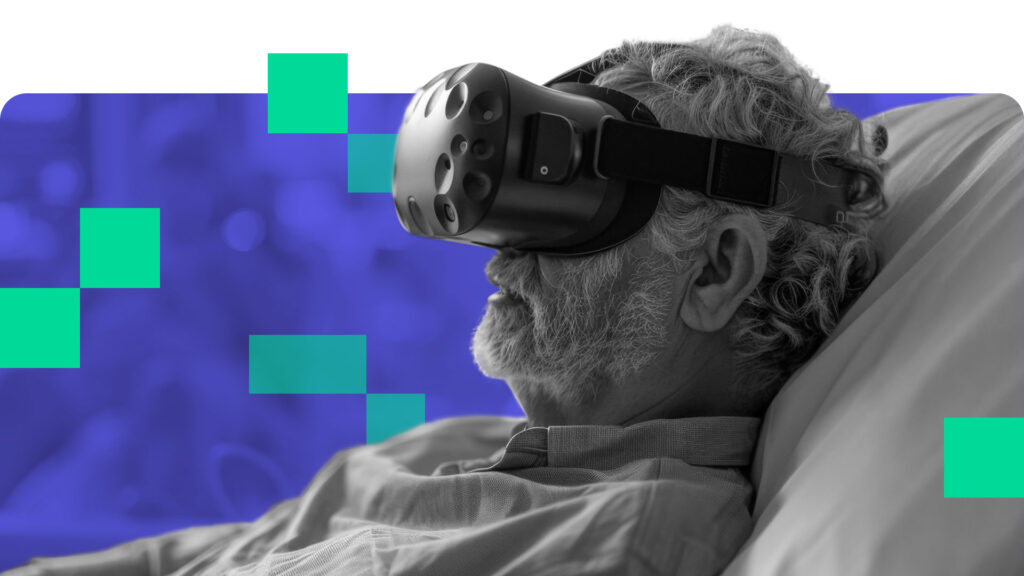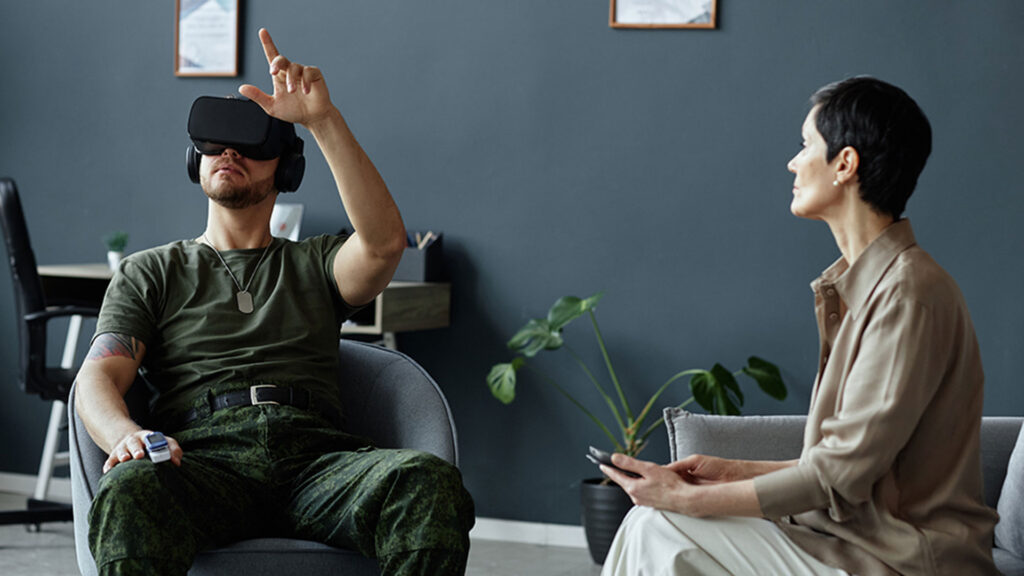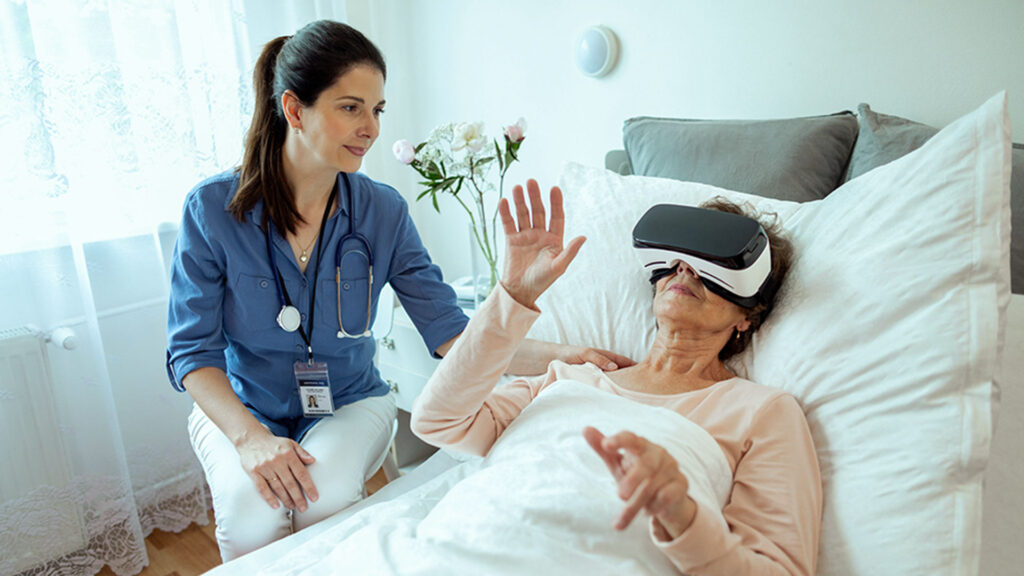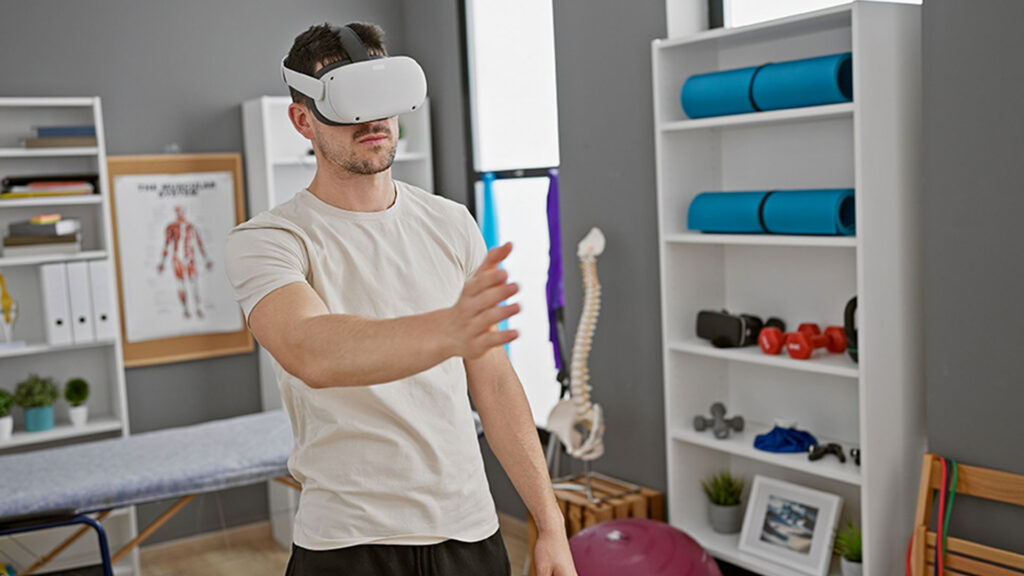How VR is Changing Mental and Behavioral Healthcare
- March 26, 2025
- Healthcare, VR

Since the earliest days of extended reality, medical innovators have been excited about its potential to impact healthcare.
The first researchers to propose health-related VR applications were called everything from visionary to ridiculous. The newborn technology was just too limited to create the immersive experience researchers dreamed of.
Today, VR technology is catching up with the vision – and it’s turning out to be everything those early innovators hoped.
One of those research pioneers, Dr. Skip Rizzo of the University of Southern California, says modern VR is helping patients manage their health and improve their quality of life.
Treating trauma and anxiety with VR
One successful application for virtual reality is in treating post-traumatic stress disorder. In 2005, Dr. Rizzo led a team to develop BraveMind, a program that uses virtual exposure therapy to help combat veterans process their trauma.
Exposure therapy involves recreating a triggering event a little at a time in a controlled environment. For example, using virtual reality, clinicians can simulate a road outside Kabul where a servicemember was injured. As they add more details from that day, they monitor the patient’s reactions.
“The clinician has this Wizard of Oz control panel that controls everything going on in the world in real time,” Dr. Rizzo said. “Through these simulations, we can help them gradually confront and process the difficult memories of their trauma.”
When it comes to processing trauma, an emotional response is key – otherwise the therapist and patient are just talking about feelings in the abstract.
VR simulations give clinicians a way to trigger that emotional response at a pace the subject can handle. The controlled environment enables them to push a little farther if the patient is ready or pull back if the response is too much.

In the twenty years since it launched, BraveMind has been distributed to more than 170 sites across the Veterans Health Administration. Developers are iterating the virtual environments to include the ongoing conflicts in Gaza and Ukraine. The program has evolved to also include therapies for survivors of sexual assault,.
Virtual exposure therapy is used to treat phobias and social anxiety as well as trauma. Patients dealing with anxiety disorders may avoid activities because they fear a panic attack; immersive virtual experiences give them a chance to enjoy these activities and build the confidence to try them in real life.
Some companies are creating immersive VR experiences to encourage mindfulness, helping people with anxiety and those who just want to reduce stress. For example, TRIPP is an award-winning wellness platform that uses VR, AR, and mobile technology to increase mindfulness. Using TRIPP’s VR experiences, people can calm their minds, wind down for sleep, or open themselves up to deeper experiences.
Assessing and treating cognitive concerns with VR

One of the first VR applications Dr. Rizzo developed was a tool to diagnose attention deficit disorder in children.
In 1998, he created a virtual classroom where a child was instructed to focus on a task. The tool measured whether the child was able to maintain their focus through programmed distractions, like a dog outside the window or people talking nearby.
Despite the cartoonish graphics and the bulky custom headset, the program worked. It evolved into Cognitive Leap, used by schools today.
The modern version creates a realistic environment using a comfortable, low-cost Oculus Quest. It delivers robust high-quality data to help schools and clinicians identify attention deficit or anxiety disorders that could impact a child’s classroom learning.
At the other end of the age spectrum, extended reality is helping older adults stave off dementia by immersing them in a remembered experience.
Dr. Rizzo says he personally witnessed the value of these memory applications. He watched as his elderly mother put on a headset that virtually put her in Rome, a place she hadn’t visited in nearly fifty years.
“It brought back a reverie and she couldn’t stop talking. ‘Oh, we had dinner at that cafe,’ ‘Oh, around this corner was our hotel,’” he said.
“It’s a remarkable thing that we can bring long-ago experiences up to the forefront. It can be healing, boost emotional well-being, and just give someone in a nursing home an experience outside their four walls.”
Dr. Skip Rizzo
Research Professor, USC
Rehabilitating with VR

After surgery or an orthopedic injury, most people are prescribed physical therapy as part of their recovery. When the injury is to the brain – such as a traumatic brain injury or stroke – they might need cognitive stimulation therapy too.
Rehabilitation therapies are only effective if they’re done consistently and correctly. But as anyone who has ever done physical therapy can attest, it’s hard, especially when patients have been discharged and have to manage on their own.
VR and AR motivate patients by gamifying their therapy. Playing requires the specific movements or activities they’ve been prescribed and rewards the patient for completing their set.
The technology also makes sure patients do their exercises correctly, so they heal faster and avoid further injury. The program offers feedback so they can correct form or posture, and can send data to their physical therapist to keep tabs on their progress.
The challenge of measuring results from VR therapies
One challenge any mental health or cognitive therapy faces is the difficulty in getting measurable data.
When they’re treating conditions like anxiety, depression, or stress, clinicians mostly rely on a patient’s self assessment of whether the treatment works. If they feel better, it’s working – but that feeling is hard, if not impossible, to measure.
That challenge doesn’t go away when the therapy is delivered through VR. However, self-reported data consistently shows positive outcomes, indicating the technology is worth the investment.
If metrics are important to an organization, they can start by identifying the things they can measure.
We can’t measure how anxious a person feels, for example, but we can measure the frequency of their panic attacks.
What’s next for VR in clinical psychology

The recent leap in artificial intelligence is making the virtual people in a simulation more realistic than ever. AI takes those characters past canned responses and enables realistic reactions to the user’s behavior.
This can be a tremendous help for new clinicians as they embark on their careers. Realistic interactions with virtual patients prepare them to stay calm and respond appropriately when conversations with real patients take an unexpected turn.
In the near future, Dr. Rizzo expects to see AI-powered virtual and augmented reality assisting patients before they get to the clinician’s office.
While no machine can replace a human clinician, VR avatars can triage people who may need help. People may even be more willing to open up to a nonjudgmental virtual avatar than to a person they don’t know.
For example, Dr. Rizzo pointed to a health and wellness chatbot that helps veterans manage their health. It monitors for symptoms of deteriorating mental health and advises users to seek help when they need it.
A similar avatar is being developed to help post-partum women deal with the physical and emotional upheaval that comes after childbirth.
Rapidly evolving technology is opening a world of possibilities for VR therapies. Noting that the academic environment is built for research, not product design, Dr. Rizzo says seeing therapies reach the hands of patients is immensely gratifying.
“You run a study, show effectiveness under perfect conditions, and where does it go from there?” he explained. “As the capabilities have made it feasible to deliver this in a cost-effective way, we can turn our attention to getting this out to the people who can benefit from it.”
VR healthcare tools are a prime example of commercial technology turning scientific research into low-cost, widely available tools to benefit everybody. See how other healthcare organizations are leveraging VR, and connect with an XR Solutions Specialist to learn more.
Subscribe to stay in the know!
